
Tamarisk 'Round the World'
07 June 2013 | San Blas Islands, Panama
01 June 2013 | Cartegena, Colombia
19 May 2013 | Caribbean Sea
07 May 2013 | Negril Jamaica
19 March 2013 | San Pedro, Guatemala
14 March 2013 | Guatemala
28 February 2013 | Ft Lauderdale, Florida
17 February 2013 | Miami and Ft Lauderdale
27 January 2013 | Exuma Islands, Bahamas
09 January 2013 | British Virgin Islands
07 January 2013 | Virgin Gorda, BVI
03 January 2013 | Sint Maatrin
01 January 2013 | St Barts, France
26 December 2012 | St Lucia, Marinique, and Dominica
05 December 2012 | Atlantic Ocean
29 October 2012 | Malaga, Spain
San Blas Islands, Panama
07 June 2013 | San Blas Islands, Panama
www.tamariskrtw.com
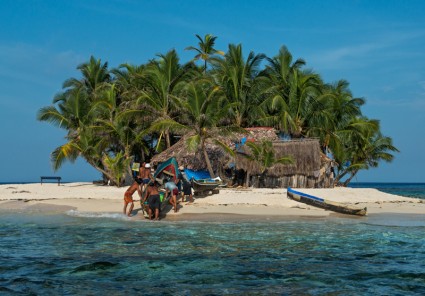
If anybody has a right to complain about things, it’s the indigenous people of the world. Pretty much everywhere you find them, you also find a tragic tale. The tale is normally one filled with peaceful simple living for many generations in complete harmony with the land, the seasons, and the elements. Then at some point in the tale, the profit-seeking white man shows up on the shore, at which point the indigenous people are enslaved or slaughtered, the survivors relocated, their resources stolen, the land pillaged, the indigenous people almost completely written out of the history books. That is the historical norm.
We’re now exploring the island chain that belongs to the Archipelago de San Blas, a string of 378 tiny tropical islands along the Panamanian coast. Given their extreme proximity to Panama’s mainland, and just 70 miles from the mouth of the world’s most vital commercial shipping lane, it’s surprising this archipelago remains almost completely uninhabited and seemingly untouched by westerners, except the occasional passing sailboat like us. The few people that do live here are the Kuna Indians, an indigenous people who exist today exactly as they have for generations and have been spared (so far) the tragic fate of their compatriots in other (probably more resource rich) places. Thanks to the Kuna, the experience for those of us sailing through the San Blas archipelago is unique and totally unforgettable.
The Kuna are a simple people who seem to survive on almost nothing but fish and coconut water- they have no electricity or running water, and they don’t seem the least bit bothered by that. Each time we’ve approached a Kuna-habited island, we’ve been welcomed – they offer to sell fish, crab, lobster, avocados, and coconuts, and the prices seem laughably low to those of us accustomed to shopping in western grocery chains. Our Kuna-prepared dinner last night, including fish, rice, veggies, and beer (warm of course) was just $5…. the experience, as you can imagine, priceless.
Luckily for us, the Kuna don’t care too much about bureaucracy either, so we plan to keep exploring for another four or five days before reaching a Panama port of entry and formally clearing into this country. In most places, a border hopping stunt like this would be a serious crime, but in the San Blas, there’s no Coast Guard, no immigration officials, no Department of Homeland Security, no customs agents, no drug smuggling task forces, nobody at all who gives a damn, and certainly not us.
We’re now exploring the island chain that belongs to the Archipelago de San Blas, a string of 378 tiny tropical islands along the Panamanian coast. Given their extreme proximity to Panama’s mainland, and just 70 miles from the mouth of the world’s most vital commercial shipping lane, it’s surprising this archipelago remains almost completely uninhabited and seemingly untouched by westerners, except the occasional passing sailboat like us. The few people that do live here are the Kuna Indians, an indigenous people who exist today exactly as they have for generations and have been spared (so far) the tragic fate of their compatriots in other (probably more resource rich) places. Thanks to the Kuna, the experience for those of us sailing through the San Blas archipelago is unique and totally unforgettable.
The Kuna are a simple people who seem to survive on almost nothing but fish and coconut water- they have no electricity or running water, and they don’t seem the least bit bothered by that. Each time we’ve approached a Kuna-habited island, we’ve been welcomed – they offer to sell fish, crab, lobster, avocados, and coconuts, and the prices seem laughably low to those of us accustomed to shopping in western grocery chains. Our Kuna-prepared dinner last night, including fish, rice, veggies, and beer (warm of course) was just $5…. the experience, as you can imagine, priceless.
Luckily for us, the Kuna don’t care too much about bureaucracy either, so we plan to keep exploring for another four or five days before reaching a Panama port of entry and formally clearing into this country. In most places, a border hopping stunt like this would be a serious crime, but in the San Blas, there’s no Coast Guard, no immigration officials, no Department of Homeland Security, no customs agents, no drug smuggling task forces, nobody at all who gives a damn, and certainly not us.
Cartegena, Colombia
01 June 2013 | Cartegena, Colombia
www.tamariskrtw.com
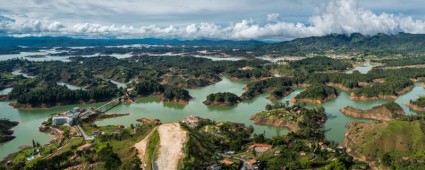
It’s common knowledge that the United States is the world’s largest economy and by most measures the world’s richest nation. What most people don’t know is that, despite some of the strictest drug laws in the world, the United States also remains the world’s largest cocaine consumer. These facts combine to drive up the value of cocaine, and by high I mean around $50,000 per kilo once it makes onto US soil. And while that might seem like a completely irrelevant factoid to you, it’s very relevant to many people here in Colombia, the world’s largest producer of cocaine. With production costs around $1500 per kilo, the big money at stake has made more than a few millionaires here. It’s also had a profound impact on the country’s internal power structures, created a violent and complex national history, and defined its relationship with the United States and, by extension, the rest of the world.
The effects of the illegal drug trade seem to pop up everywhere here, and for us it began with warnings from other travelers the very first moment we stepped ashore. Guerrilla groups like the FARC and ELN (major drug producers with small armies) maintain control over much of the drug production and trafficking in some parts of the country, and as a general rule those areas are to be avoided (partially because hostage taking is a revenue generator for them). As an American traveler here, a general safety tip we’ve received is to avoid admitting to US citizenship – the US’s history of meddling in Colombian affairs has created a few hard feelings in some circles (thanks partially to its successful disintegration of the powerful drug cartels of prior decades, including Pablo Escobar’s famous Medellin Cartel, its support of violent military operations against peasant farmers, its continued financial and military support to the Colombian government in the war on drugs, etc.). A dinghy ride around the harbor proved to us that all this war-on-drugs nonsense isn’t just mumbo jumbo…. sitting just a few hundred yards from our anchorage in the Bocagrande harbor is the Colombian Coast Guard facility with a waterfront literally packed with seized drug running boats and submarines – a fascinating sight and testament to how sophisticated this “industry” is (see pic). Our casual walk through the historic city center was also made interesting by the occasional approach from friendly Colombian drug dealers who wasted no time letting us know they can “get everything”.
None of this is of even the slightest concern to us… in fact the opposite is true, it makes the experience here unique. The cities (especially Cartegena) are very safe, we get a free glimpse into how this whole drug world operates, and we had no interest in wandering around in the FARC controlled farming areas anyway, so there’s no loss from a practical perspective. Everything we’ve seen so far here we love – the Spanish influenced culture, beautiful historic architecture, fun backpacker-style nightlife scene, friendly and virtually hassle-free vibe, and the easy access to everything by dinghy makes it ideal for those of us coming to Cartegena by boat.
Colombia is big and we’ve got just a little over a week here, so we’re sitting down now to map out our itinerary. We’ve heard some interesting things about Pablo Escobar’s hometown, Medellin, where rumor has it the drug lords of years past “imported” the most attractive women from around the country and “exported” the uglier ones, creating, the story goes, the most attractive female population in the world (what exactly import/export means isn’t clear). And even though this whole story sounds doubtful, and even though we’re firmly against the importation and exportation of women, we’ve decided to do a little research mission into this subject to learn more…. we’ll report back with our findings in a few days.
The effects of the illegal drug trade seem to pop up everywhere here, and for us it began with warnings from other travelers the very first moment we stepped ashore. Guerrilla groups like the FARC and ELN (major drug producers with small armies) maintain control over much of the drug production and trafficking in some parts of the country, and as a general rule those areas are to be avoided (partially because hostage taking is a revenue generator for them). As an American traveler here, a general safety tip we’ve received is to avoid admitting to US citizenship – the US’s history of meddling in Colombian affairs has created a few hard feelings in some circles (thanks partially to its successful disintegration of the powerful drug cartels of prior decades, including Pablo Escobar’s famous Medellin Cartel, its support of violent military operations against peasant farmers, its continued financial and military support to the Colombian government in the war on drugs, etc.). A dinghy ride around the harbor proved to us that all this war-on-drugs nonsense isn’t just mumbo jumbo…. sitting just a few hundred yards from our anchorage in the Bocagrande harbor is the Colombian Coast Guard facility with a waterfront literally packed with seized drug running boats and submarines – a fascinating sight and testament to how sophisticated this “industry” is (see pic). Our casual walk through the historic city center was also made interesting by the occasional approach from friendly Colombian drug dealers who wasted no time letting us know they can “get everything”.
None of this is of even the slightest concern to us… in fact the opposite is true, it makes the experience here unique. The cities (especially Cartegena) are very safe, we get a free glimpse into how this whole drug world operates, and we had no interest in wandering around in the FARC controlled farming areas anyway, so there’s no loss from a practical perspective. Everything we’ve seen so far here we love – the Spanish influenced culture, beautiful historic architecture, fun backpacker-style nightlife scene, friendly and virtually hassle-free vibe, and the easy access to everything by dinghy makes it ideal for those of us coming to Cartegena by boat.
Colombia is big and we’ve got just a little over a week here, so we’re sitting down now to map out our itinerary. We’ve heard some interesting things about Pablo Escobar’s hometown, Medellin, where rumor has it the drug lords of years past “imported” the most attractive women from around the country and “exported” the uglier ones, creating, the story goes, the most attractive female population in the world (what exactly import/export means isn’t clear). And even though this whole story sounds doubtful, and even though we’re firmly against the importation and exportation of women, we’ve decided to do a little research mission into this subject to learn more…. we’ll report back with our findings in a few days.
Caribbean Sea
19 May 2013 | Caribbean Sea
www.tamariskrtw.com
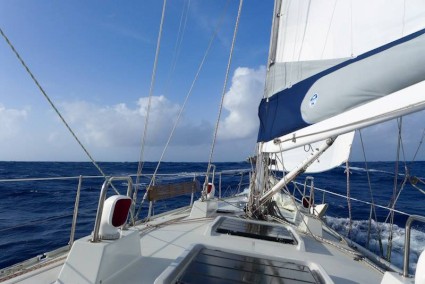
Last April in Marmaris as we began our journey, the idea of crossing a large and unwieldy body of water like the Caribbean Sea was not an intimidating thought That was a sign of utter cluelessness, not one of admirable bravery. A year later, thanks mainly to our countless “humblings” in all corners of the Mediterranean and several refresher courses on the Atlantic crossing, we know better, and today we take very seriously any passage across a body of water with the word “Ocean” or “Sea” in its name.
We now enter the third and final ay of our Caribbean Sea crossing with Cartegena, Colombia less than 150 miles from our bow. Over the past couple of weeks we’ve battled against the changing seasons, which forced us to make this crossing before the tropical storm season gets underway, and also against autopilot problems that threatened to create intolerable delays. We were pleased to finally get our autopilot cleared through Jamaican customs and even more pleased to get the installation completed and our passage underway in less than a day. We won’t declare victory on our autopilot problems just yet, but after two days of 20-30 knot winds and the heavy seas that Caribbean Sea is known for, we can at least smell that victory is nearby.
Multi-day passages like this, in our opinion, aren’t a reason to take up the hobby of sailing. For those imagining it to be a relaxing cruise filled with fishing, reading books, and sunbathing on the deck, talk to us about this before buying your dream boat. Even a big boat like Tamarisk gets tossed around like a toy – beginners find it loud, violent, seasick inducing, and with the hatches closed to keep the waves out, its hot enough down below that Swifty calls it a “sweat camp”.
But there’s a reason we endure the heat, the waves, the pounding, etc. and will continue to do so until we’ve gone 360 degrees around the marble and back to where we started from. In a word, it’s our curiosity, and as we approach Cartegena, being a new port, a new country, and a new continent all at once, our anticipation reminds us how curious we are. We’re probably asking ourselves some of the same questions that have driven people to explore far away places since the beginning of time: what might we find, who might we meet, what might me learn. But before we get to any of that business the first thing we’ll be asking is where can we find an ice cold cerveza?
We now enter the third and final ay of our Caribbean Sea crossing with Cartegena, Colombia less than 150 miles from our bow. Over the past couple of weeks we’ve battled against the changing seasons, which forced us to make this crossing before the tropical storm season gets underway, and also against autopilot problems that threatened to create intolerable delays. We were pleased to finally get our autopilot cleared through Jamaican customs and even more pleased to get the installation completed and our passage underway in less than a day. We won’t declare victory on our autopilot problems just yet, but after two days of 20-30 knot winds and the heavy seas that Caribbean Sea is known for, we can at least smell that victory is nearby.
Multi-day passages like this, in our opinion, aren’t a reason to take up the hobby of sailing. For those imagining it to be a relaxing cruise filled with fishing, reading books, and sunbathing on the deck, talk to us about this before buying your dream boat. Even a big boat like Tamarisk gets tossed around like a toy – beginners find it loud, violent, seasick inducing, and with the hatches closed to keep the waves out, its hot enough down below that Swifty calls it a “sweat camp”.
But there’s a reason we endure the heat, the waves, the pounding, etc. and will continue to do so until we’ve gone 360 degrees around the marble and back to where we started from. In a word, it’s our curiosity, and as we approach Cartegena, being a new port, a new country, and a new continent all at once, our anticipation reminds us how curious we are. We’re probably asking ourselves some of the same questions that have driven people to explore far away places since the beginning of time: what might we find, who might we meet, what might me learn. But before we get to any of that business the first thing we’ll be asking is where can we find an ice cold cerveza?
Negril Jamaica
07 May 2013 | Negril Jamaica
wwwtamariskrtw.com
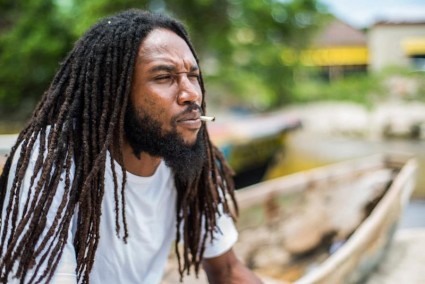
The distance between Cuba and Jamaica is barely even 80 miles, but when you travel from one place to the other, it literally feels like you've arrived on the other side of the planet. Jamaica is about as far from communism as a society can be, and that's a refreshing change. Our week so far in Jamaica has been made more interesting than most because of the people we've found here. In addition to the unusually large number of young (30-something) sailors we've met here, we've also connected with Kiewa the Messiah, which is Piers's Jamaican friend from his last visit some years ago. With this very diverse group, we've explored all corners of Jamaica during the past week.
As almost always is the case, we've gone far off the beaten path in Jamaica and have been learning about local life here while avoiding anything with a tourist bus out in front. That's been pretty easy thanks to the time we've spent hanging out with Kiewa the Messiah, who's about as local as a Jamaican can be and, luckily for us, as curious about our lives on the boat as we are about his. Kiewa is a Rasta, which means he subscribes to the beliefs and lifestyle of the Rastafari movement, which is partially a religion and partially a way of life. This means he's deeply reflective, maintains a simple and humble lifestyle, rejects materialism, accepts everyone, eats a strict vegetarian diet, and like all Rastas, smokes the "sacred herb" (marijuana) in a way that is far more spiritual and religious than recreational.... a nicer, more selfless person would be difficult to find anywhere.
Crime in Jamaica, unfortunately, is a real problem, particularly the petty theft variety, and visiting sailors need to be careful here. We learned about this the hard way the day we arrived when we lost a cell phone to a clever teenage street thief (now in jail after showing off to the wrong people). The growth and consumption of marijuana here, despite its popularity, is all totally illegal and, surprisingly, quite strictly enforced. We've already been thoroughly searched several times (one boat boarding and two vehicle searches), and although government searches are always an annoyance wherever we are, the suspicion here is probably more justified than usual given the drug smuggling problems. A confiscated American sailboat sits just 100 yards from our anchor after the owner tried stashing away 400 pounds of the sacred herb last week - a tempting $500k profit if he'd made it all the way to US soil.
Most tourists to Jamaica come by cruise boat or to visit one of the gigantic all-inclusive resorts. This is a shame - their protective bubbles shield them from the hazards of Jamaican street life, and also shield them from almost everything that's interesting about the place. We'll probably be here for another week or two while we wait for autopilot parts coming from Miami, then as soon as possible we'll be heading south to Colombia - a place where the drug smugglers think in $millions, not $thousands. The weather is changing now with storms, torrential rain, and squally winds becoming pretty routine, so we're anxious to get across the Caribbean Sea before this becomes a more significant threat.
As almost always is the case, we've gone far off the beaten path in Jamaica and have been learning about local life here while avoiding anything with a tourist bus out in front. That's been pretty easy thanks to the time we've spent hanging out with Kiewa the Messiah, who's about as local as a Jamaican can be and, luckily for us, as curious about our lives on the boat as we are about his. Kiewa is a Rasta, which means he subscribes to the beliefs and lifestyle of the Rastafari movement, which is partially a religion and partially a way of life. This means he's deeply reflective, maintains a simple and humble lifestyle, rejects materialism, accepts everyone, eats a strict vegetarian diet, and like all Rastas, smokes the "sacred herb" (marijuana) in a way that is far more spiritual and religious than recreational.... a nicer, more selfless person would be difficult to find anywhere.
Crime in Jamaica, unfortunately, is a real problem, particularly the petty theft variety, and visiting sailors need to be careful here. We learned about this the hard way the day we arrived when we lost a cell phone to a clever teenage street thief (now in jail after showing off to the wrong people). The growth and consumption of marijuana here, despite its popularity, is all totally illegal and, surprisingly, quite strictly enforced. We've already been thoroughly searched several times (one boat boarding and two vehicle searches), and although government searches are always an annoyance wherever we are, the suspicion here is probably more justified than usual given the drug smuggling problems. A confiscated American sailboat sits just 100 yards from our anchor after the owner tried stashing away 400 pounds of the sacred herb last week - a tempting $500k profit if he'd made it all the way to US soil.
Most tourists to Jamaica come by cruise boat or to visit one of the gigantic all-inclusive resorts. This is a shame - their protective bubbles shield them from the hazards of Jamaican street life, and also shield them from almost everything that's interesting about the place. We'll probably be here for another week or two while we wait for autopilot parts coming from Miami, then as soon as possible we'll be heading south to Colombia - a place where the drug smugglers think in $millions, not $thousands. The weather is changing now with storms, torrential rain, and squally winds becoming pretty routine, so we're anxious to get across the Caribbean Sea before this becomes a more significant threat.
San Pedro, Guatemala
19 March 2013 | San Pedro, Guatemala
www.tamariskrtw.com
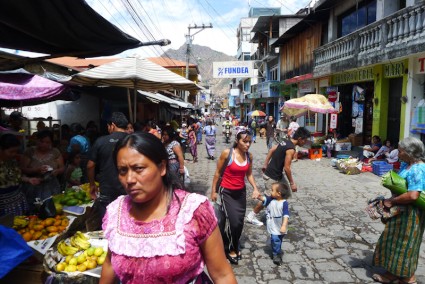
In the West today, the big news is the latest bailout of another European nation’s bankrupt financial system. The bailout of Cyprus is different from others we’ve seen so far because for the first time, normal account holders are being forced to pay for part it with a portion of their deposited savings. The potential of that hit to ordinary people is causing outrage, panic, and a run on local banks. Financial markets across the West are again in disarray, a Cyprus bank holiday has been declared to prevent a full blown panic, and European leaders are once again scrambling to figure out how to prevent a small southern nation from triggering a domino-like collapse of the western financial system.
That our house of cards in the developed world became this fragile is sad and ridiculous. Yet we’ve become so accustomed to life in our delicate debt based economies that most of us now simply choose to ignore this news like it’s background noise, we hope the problems just go away sometime, somehow. We fail to recognize that our high standard of living is enabled by spending far more than we earn, the shortfall coming from ever-increasing levels of debt. Our governments do it, our banks do it, our corporations do it, and we the people do it. It’s a system that’s served us well for many decades – our quality of life rose exponentially by nearly all measures, our life expectancies grew, we outsourced our unpleasant labor-intensive jobs to people in poorer countries, we got houses and new cars, we became “rich” beyond the imagination even of Kings and Queens from prior generations. All of it was enabled largely by the miracle of expanding debt.
The problem with this strategy, as we’ve seen first hand in many places on our journey so far (e.g. this, this, and this), is that there are limits to the game of endless borrowing. At some point the debt reaches crushing levels, repayment becomes obviously impossible to anyone with basic math skills, and the house of cards begins to be exposed for what it really is. We’ve reached that point, and we’re now just starting to reconcile the accounts of the foolish borrowers and the even more foolish lenders. No matter the solution from here, it’s clear our old game of “endless” borrowing isn’t quite as “endless” as we had hoped.
As we ponder the complete mess we’ve become in the developed world and search for some kind of “EJECT” button, it’s tempting to look for other ways societies might be organized that don’t rely on limitless debt expansion. We’ve found one such example, although an imperfect one, here in Guatemala. We’ve been here for over a week now, frequently traveling into rural towns and villages where the idea of debt doesn’t even exist for most people. Our intent was to learn about their living condition and how people in the developed world can help them solve their most dire problems, but we’re learning just as much about how we might solve our own problems as we are theirs. The people here live simple lives, they farm their own land, trade with each other at local markets, they have almost no need for “money” (let alone debt), and most admirably, they consume virtually no outside resources and enjoy completely sustainable lives – they can live this way forever.
To be sure, this simple lifestyle is riddled with poverty-related problems and is not a model for the future of the west. Pollution here is uncontrolled, living conditions are frequently unsafe and unsanitary, medical care is unavailable to most. But as we start thinking about life without limitless debt expansion, we’ll need to consider lifestyle changes that let us live more efficiently, consume less, and most critically, borrow less. Guatemala and its economic model, despite its shortcomings, is a model of efficiency and sustainability. Although we’ll be slow and reluctant to adopt these changes, we predict the following might inevitably be coming our way in coming decades:
food produced closer to where it’s consumed, rising importance of local agriculture
reduced ability of the state to provide welfare, increased reliance on friends, family, neighbors for support, increased sense of “community”
shifting preferences from comfort and style towards utility and function
fewer imports, more domestic production, fewer people in offices
longer careers
smaller cars, more scooters, mopeds, etc., more public transportation
less miles traveled
We have two days left in Guatemala without much on the agenda, then we’re off to El Salvador for one last charity visit before getting back to the boat in Florida and finally blasting out to sea again. It’s been 24 hours in bed for me, thanks to an impressive case of Montezuma’s Revenge, which explains today’s longer than usual ramblings…. I promise a return to regular length updates as soon as I return to regular length bathroom visits.
That our house of cards in the developed world became this fragile is sad and ridiculous. Yet we’ve become so accustomed to life in our delicate debt based economies that most of us now simply choose to ignore this news like it’s background noise, we hope the problems just go away sometime, somehow. We fail to recognize that our high standard of living is enabled by spending far more than we earn, the shortfall coming from ever-increasing levels of debt. Our governments do it, our banks do it, our corporations do it, and we the people do it. It’s a system that’s served us well for many decades – our quality of life rose exponentially by nearly all measures, our life expectancies grew, we outsourced our unpleasant labor-intensive jobs to people in poorer countries, we got houses and new cars, we became “rich” beyond the imagination even of Kings and Queens from prior generations. All of it was enabled largely by the miracle of expanding debt.
The problem with this strategy, as we’ve seen first hand in many places on our journey so far (e.g. this, this, and this), is that there are limits to the game of endless borrowing. At some point the debt reaches crushing levels, repayment becomes obviously impossible to anyone with basic math skills, and the house of cards begins to be exposed for what it really is. We’ve reached that point, and we’re now just starting to reconcile the accounts of the foolish borrowers and the even more foolish lenders. No matter the solution from here, it’s clear our old game of “endless” borrowing isn’t quite as “endless” as we had hoped.
As we ponder the complete mess we’ve become in the developed world and search for some kind of “EJECT” button, it’s tempting to look for other ways societies might be organized that don’t rely on limitless debt expansion. We’ve found one such example, although an imperfect one, here in Guatemala. We’ve been here for over a week now, frequently traveling into rural towns and villages where the idea of debt doesn’t even exist for most people. Our intent was to learn about their living condition and how people in the developed world can help them solve their most dire problems, but we’re learning just as much about how we might solve our own problems as we are theirs. The people here live simple lives, they farm their own land, trade with each other at local markets, they have almost no need for “money” (let alone debt), and most admirably, they consume virtually no outside resources and enjoy completely sustainable lives – they can live this way forever.
To be sure, this simple lifestyle is riddled with poverty-related problems and is not a model for the future of the west. Pollution here is uncontrolled, living conditions are frequently unsafe and unsanitary, medical care is unavailable to most. But as we start thinking about life without limitless debt expansion, we’ll need to consider lifestyle changes that let us live more efficiently, consume less, and most critically, borrow less. Guatemala and its economic model, despite its shortcomings, is a model of efficiency and sustainability. Although we’ll be slow and reluctant to adopt these changes, we predict the following might inevitably be coming our way in coming decades:
food produced closer to where it’s consumed, rising importance of local agriculture
reduced ability of the state to provide welfare, increased reliance on friends, family, neighbors for support, increased sense of “community”
shifting preferences from comfort and style towards utility and function
fewer imports, more domestic production, fewer people in offices
longer careers
smaller cars, more scooters, mopeds, etc., more public transportation
less miles traveled
We have two days left in Guatemala without much on the agenda, then we’re off to El Salvador for one last charity visit before getting back to the boat in Florida and finally blasting out to sea again. It’s been 24 hours in bed for me, thanks to an impressive case of Montezuma’s Revenge, which explains today’s longer than usual ramblings…. I promise a return to regular length updates as soon as I return to regular length bathroom visits.
Guatemala City, Guatemala
14 March 2013 | Guatemala
www.tamariskrtw.com
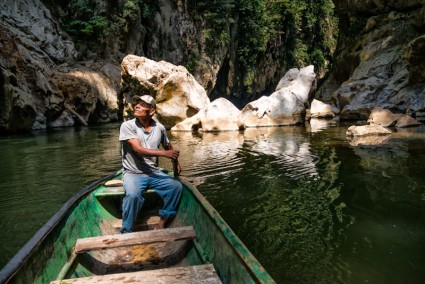
It’s funny to think that just over two months ago we were moored in St. Barts among the biggest megayachts in the world and ringing in the New Year with the world’s most excessively rich. Now we’re sitting in Guatemala where the most basic luxuries by western standards are beyond the reach of almost everyone. With an average annual income of less than $3000, it’s understandable why so many people here can’t afford things like cars, air conditioners, and medical services. What’s more difficult to understand is why things in the world turned out this way. What creates this enormous gap between the rich and the poor and why is that gap growing? Why are there billion dollar megayachts parked just a few hundred miles away from people who are hungry?
We don’t have the answers to these big questions, but what we’re realizing already after just a few days in Guatemala is that there is reason to have hope that things might change over time, even if it starts at the grassroots level. In San Benito yesterday we witnessed doctors performing cataract surgeries using scalpels and needles for $65 per patient (much of which comes from charitable donors). The same surgery in the United States (using lazers and general anesthesia) would cost over $3000. In Guatemala City today we met the owners of a local clinic who invest almost 100% of their profits into providing free medical services for the poor – a concept that would seem bizarre in most western countries where the purpose of “profits” is to enrich the shareholders. This combination of socially minded local entrepreneurs and generous donors from richer countries clearly can have powerful results as we saw yesterday: for the price of a nice dinner in Los Angeles, sight can be restored for a blind Guatemalan.
Our travel in Guatemala also is interesting for a different reason: it’s awesome here. For sure this is a place for more adventurous travelers who aren’t afraid of animals running around the streets and a general environment of chaos in many places. But for those brave enough to get here, you get to experience natural beauty that rivals the nicest places in the Caribbean, only for a fraction of the price and without the mind numbing quantity of sunburned English-speakers getting in your way that you’re probably used to (and the abundance of rules that are always needed to protect them). We’ve traveled enough to be perfectly comfortable in these places, and we wouldn’t trade that for anything.
Tomorrow we head deeper into Guatemala towards Lago del Atitlan and we’ll luckily have most of the weekend free to explore before our meetings early next week. Then we’re hopping on a bus for El Salvador just south of here, which is one notch further up on the adventure scale.
We don’t have the answers to these big questions, but what we’re realizing already after just a few days in Guatemala is that there is reason to have hope that things might change over time, even if it starts at the grassroots level. In San Benito yesterday we witnessed doctors performing cataract surgeries using scalpels and needles for $65 per patient (much of which comes from charitable donors). The same surgery in the United States (using lazers and general anesthesia) would cost over $3000. In Guatemala City today we met the owners of a local clinic who invest almost 100% of their profits into providing free medical services for the poor – a concept that would seem bizarre in most western countries where the purpose of “profits” is to enrich the shareholders. This combination of socially minded local entrepreneurs and generous donors from richer countries clearly can have powerful results as we saw yesterday: for the price of a nice dinner in Los Angeles, sight can be restored for a blind Guatemalan.
Our travel in Guatemala also is interesting for a different reason: it’s awesome here. For sure this is a place for more adventurous travelers who aren’t afraid of animals running around the streets and a general environment of chaos in many places. But for those brave enough to get here, you get to experience natural beauty that rivals the nicest places in the Caribbean, only for a fraction of the price and without the mind numbing quantity of sunburned English-speakers getting in your way that you’re probably used to (and the abundance of rules that are always needed to protect them). We’ve traveled enough to be perfectly comfortable in these places, and we wouldn’t trade that for anything.
Tomorrow we head deeper into Guatemala towards Lago del Atitlan and we’ll luckily have most of the weekend free to explore before our meetings early next week. Then we’re hopping on a bus for El Salvador just south of here, which is one notch further up on the adventure scale.
| Vessel Name: | Tamarisk |
| Vessel Make/Model: | Sundeer 56 |
| Hailing Port: | Isle of Man, United Kingdom |
| Crew: | Jason Windebank, Piers Windebank |
| About: | |
| Extra: | Please follow our adventure on our blog http://www.TamariskRTW.com of follow us on Facebook https://www.facebook.com/TamariskRTW |
Gallery not available
Tamarisk Round the World
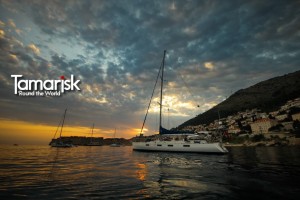
Who: Jason Windebank, Piers Windebank
Port: Isle of Man, United Kingdom